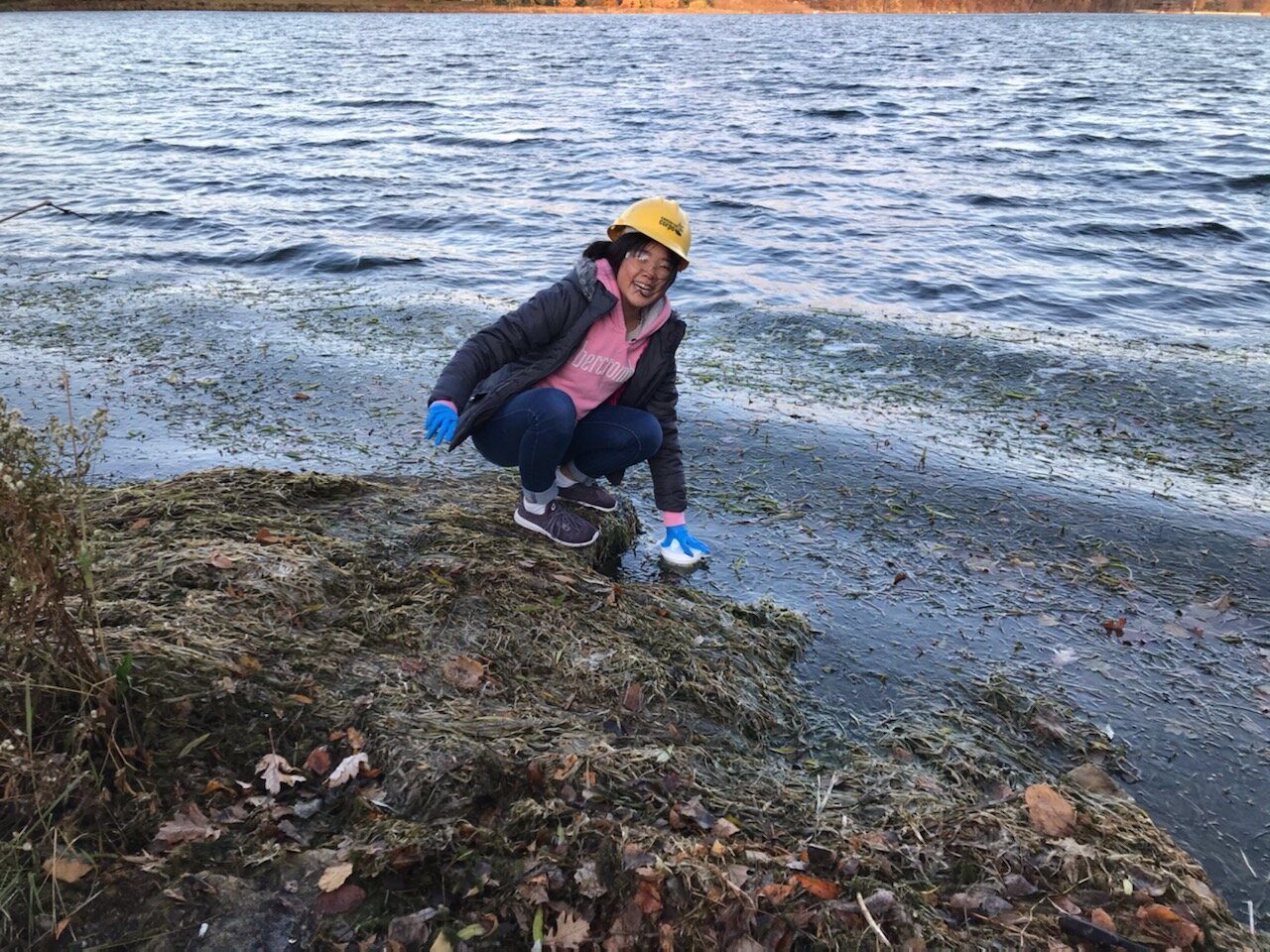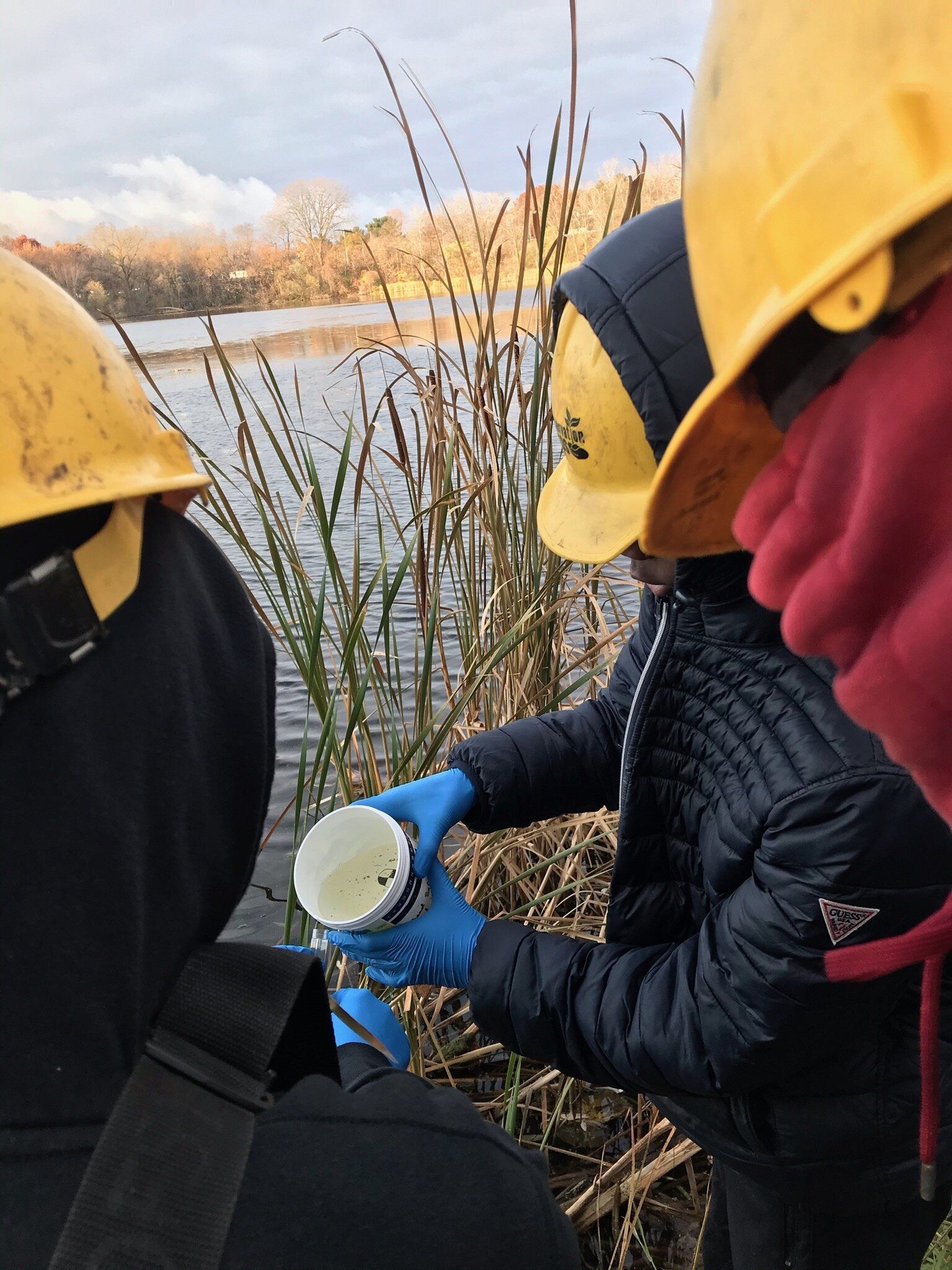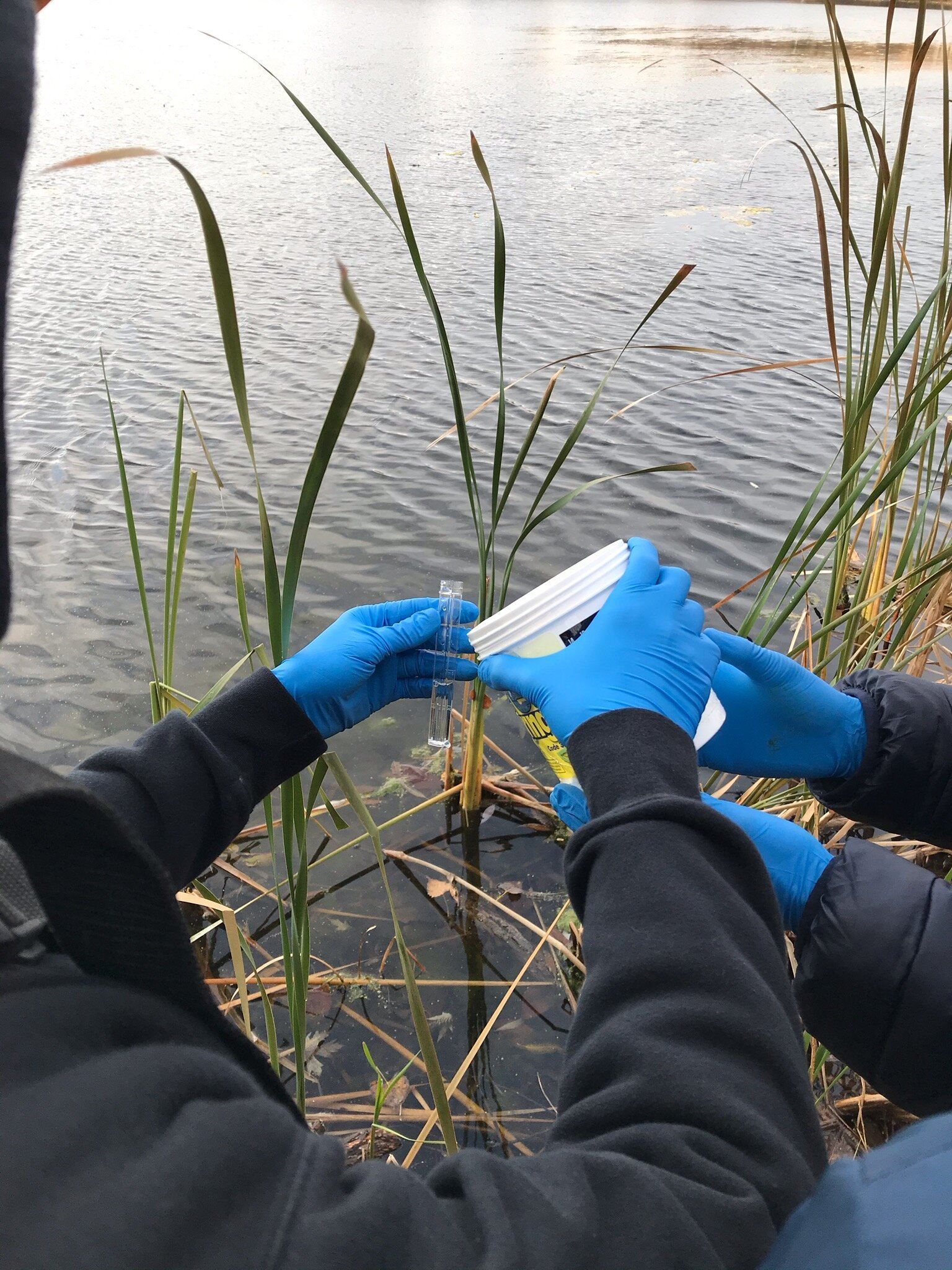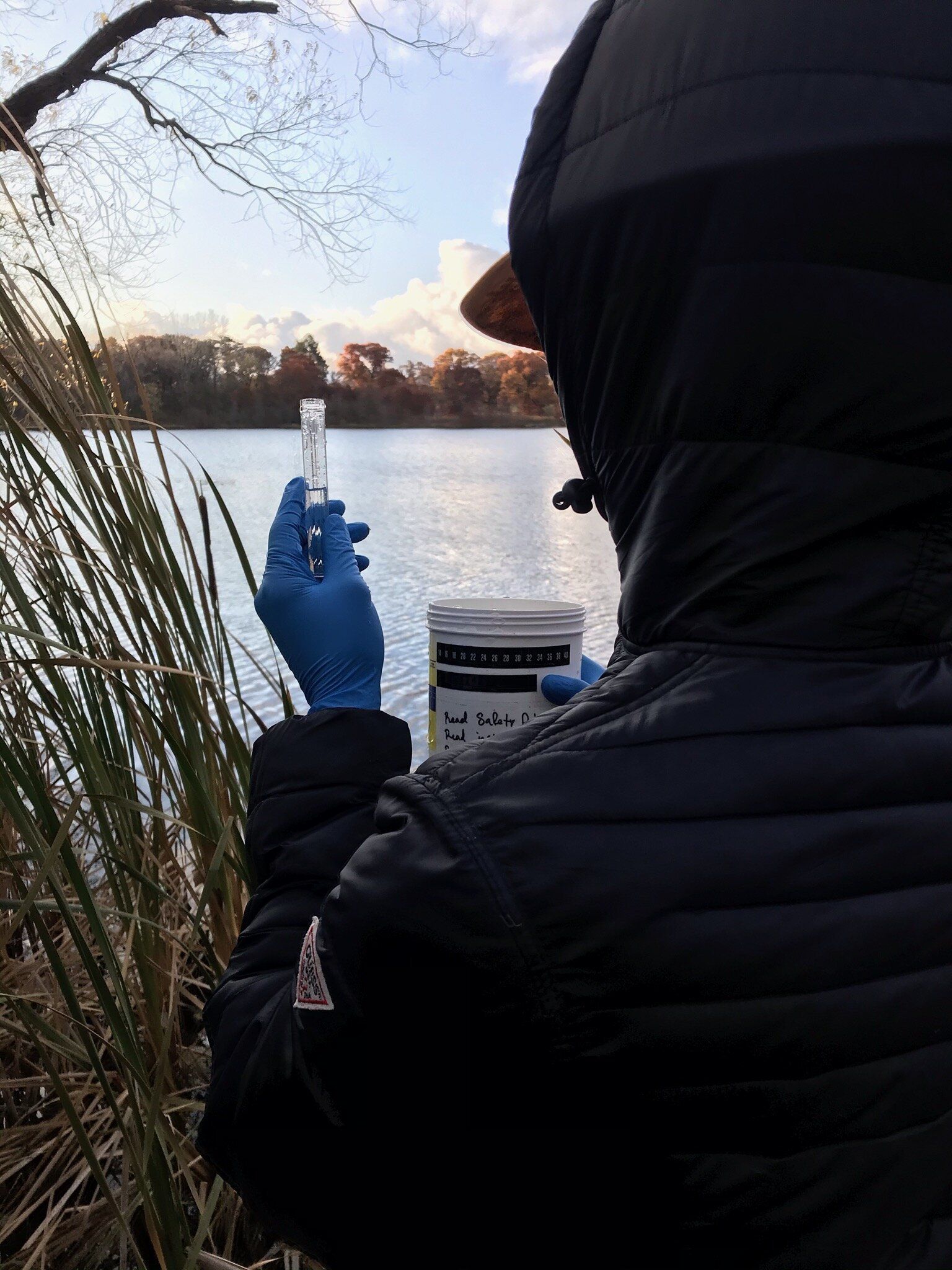Water quality testing on a a cold Minnesota day
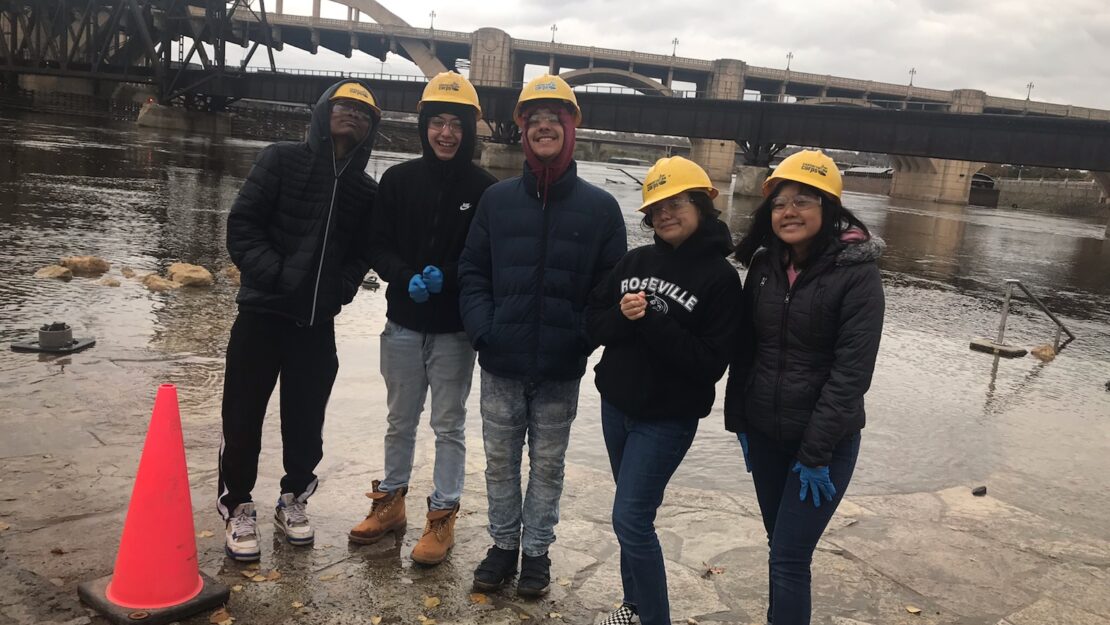
Youth Outdoors Crew YO3B Capstone Project by youth members Kenyon Barnett, Alejandro Flores, Armando Flores, Britney Florian, and Ehler Dwe
On November 2nd, 2019 our youth crew (YO3B) went around St. Paul testing the water qualities in different lakes for our capstone project. A capstone is a project youth from Conservation Corps MN & IA do at the end of their term. The purpose of a capstone project is to help the community.
The youth outdoors program consists of youth between the age of 15 and 18 where we learn about the environment and professional fieldwork skills. It has taught us not only how to plant but has helped us notice what important skills we need to take care of the earth and everything in it.
The lakes that were tested were Phalen Lake, Round Lake, Keller Lake, Spoon Lake, Gervais Lake and Mississippi River/Raspberry Island. We were testing the different pH and Nitrate levels. We decided to focus on water quality because we wanted to figure out the different pollution levels in nearby lakes. Our crew is also based at Phalen rec. center which is located near Lake Phalen.
Nitrate- a needed nutrient for all aquatic plants and animals to build protein. The decomposition of dead plants and animals and the excretions of living animals release nitrate into the aquatic system. Nitrate increases plant growth and promote bacterial decomposition.
pH- a measurement of the acidic or basic quality of water. The scale ranges from a value of 0 which is very acidic to 14 that is very basic. Most of the aquatic organisms are adapted to a specific level and may die if it changes.
To test for the pH, we filled a test tube to the 10mL line with the water sample from each lake. Then we added one pH wide range Test Tab. After that, we sealed the test tube and let the Test Tab dissolve into the water. For the last step we compared the color of the sample to the pH color chart and recorded the results.
To test for nitrate, we filled a test tube to the 5mL line with the water sample from each lake. Then we added one pH wide range CTA Test Tab. Then we capped and mixed the sample by inverting it for 2 minutes to dissolve the tablet and we waited 5 minutes for the red color to develop. For the last step we compared the color sample to the nitrate color chart.
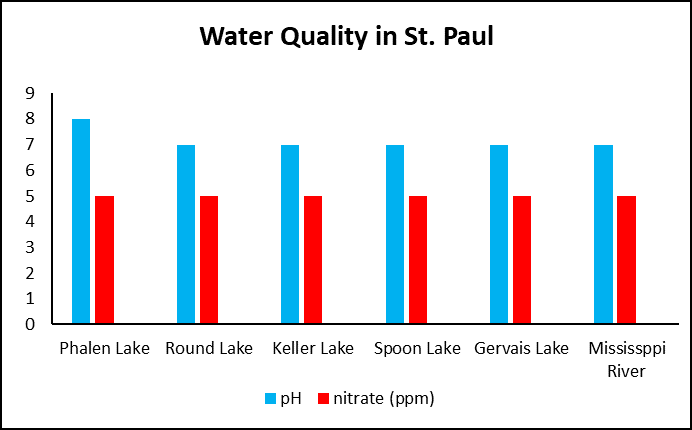
What we learned in this one day is that the pH levels in our local area are fair, as almost all the samples had a pH of 7 except Phalen which had a pH of 8. On the pH scale, neutral water is between 6.5 and 8.2. What we learned about nitrate was that it is a nutrient for both plants and animals to build protein. In all the samples we took, nitrate was at 5 ppm (parts per million) which was at a ranking scale of fair. Based on what we found, the bodies of water we sampled are healthy. Some of our crew members were surprised that the bodies of water had such good results. We expected the results to differ and not to be similar, especially from the highly populated areas such as Phalen Lake and the Mississippi River.
Today was kind of a challenging day because it was once again cold in Minnesota, especially while working with water. But overall, we all had a good experience because we were able to see how many different things can affect water bodies only a couple of miles away from each other. We have learned that Phalen lake has a higher pH level than the rest, which means that its more basic. We also learned different skills from each other, and we all had a different responsibility that helped us go through this project faster. Kenyon and Armando mainly put water into the test tubes, Alejandro was the turbidity tester, Ehler recorded the results of each lake, and Britney took good pictures to remember this amazing cold day.
